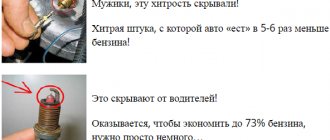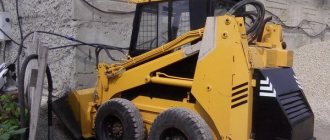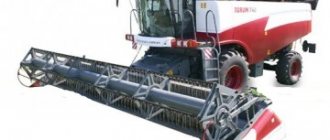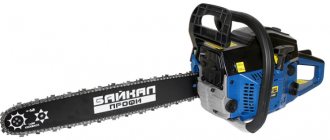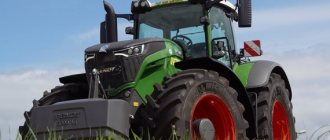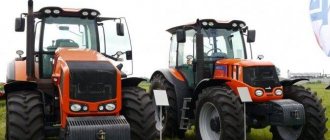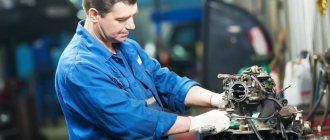Hopper 900 MQ
Model 900 MQ is a universal walk-behind tractor, which can additionally be equipped with a wide range of attachments, such as a mower, weight, potato digger, hiller, etc.
The walk-behind tractor can cope with the following tasks:
- Loosen the plowed soil.
- Hill up root crops.
- Mow grass and small shrubs.
- Transport small-sized cargo.
- Perform area cleaning work.
- Dig up ripe root vegetables.
The design of this equipment includes a function for adjusting the tillage depth and a belt-type clutch. Massive wheels allow the walk-behind tractor to cope with off-road conditions, so it can be used when processing icy soil.
It has a four-stroke engine that runs on gasoline. The fuel tank capacity is 3.6 liters and fuel consumption is 1.8 l/h. This equipment weighs 75 kg, and its dimensions are 1.3 * 0.55 * 1.1 m.
The powerful engine allows you to process heavy soils, including virgin soil. Due to the fact that weighting agents can be installed on the wheels of the Hopper 900 mq 7 hp walk-behind tractor, productivity when cultivating dense soils increases significantly. Engine power in combination with weights provide the walk-behind tractor with great traction force, which is very important when working with mounted and trailed equipment.
Model 900 MQ has many positive reviews from owners. The advantages of this technique include:
- low fuel consumption
- high performance
- long service life
- aggregation with various attachments
- large pneumatic wheels
- small size is convenient for transportation
- protection of the engine and operator from flying stones
There are no obvious disadvantages to the Hopper 900 MQ walk-behind tractor; some owners highlight the cost of maintenance - a four-stroke engine requires high-quality oil, which is expensive, but its consumption is low.
Motoblocks of this brand have high-quality assembly and most breakdowns occur due to violation of operating rules. Among them, we can highlight the running-in, which should be carried out as follows:
- When starting for the first time, be sure to check the oil level
- The engine should idle for several minutes
- carry out the first hour of work at minimum speed
- for the next 7 hours avoid high loads (plowing, etc.)
- after break-in, change the oil
All these measures are necessary to adjust the operation of the engine, chassis and transmission. Running in allows you to extend the life of the equipment.
Run-in
Before starting to use a new walk-behind tractor, or one that has already been used but has not been used for a long time, it is recommended to complete the entire running-in course in order to extend the life of the device. This applies to both diesel and gasoline engines. The entire break-in procedure will not take much time.
- The oil and fuel levels are checked and topped up if necessary.
- The engine is started and left to run at medium speed for about an hour.
- By shifting gears periodically, you not only test the system, but also allow the oil to distribute evenly. Subsequently, the equipment can be used at work, but without load.
- A prerequisite is to change the oil and fuel after completing the run-in of the walk-behind tractor.
Motoblock Hopper 1000 in operation:
Hopper 1000U 7B
This version is equipped with a four-stroke gasoline engine with a power of 7 hp. With. The walk-behind tractor is designed for cultivating an area of up to 1 hectare.
A mechanical gearbox is installed here: 3 forward speeds and 1 reverse, reverse gear helps to cope with tillage in hard-to-reach places.
The turning mechanism on the steering wheel helps the driver to maneuver easily. The wheels have a textured tread, which makes it easier to perform work in off-road conditions. Wide fenders additionally protect the power unit and driver from dust and lumps of dirt.
Here you can also adjust the depth of tillage, which helps increase the functionality of the equipment.
Thanks to user reviews, the following advantages and disadvantages of this walk-behind tractor model can be identified:
- economical fuel consumption;
- powerful engine;
- comfortable steering;
- It is not possible to work with heavy loads.
Specifications
In the production of Khoper walk-behind tractors, both gasoline and diesel engines are used. Their power varies for each specific model (from five to nine hp), cooling can occur either by air or by liquid. Thanks to the high-quality equipment, the machines are characterized by durability, endurance and reliability.
The gearbox design in mini-tractors is characterized by a chain type. The weight of the equipment varies, on average it is 78 kg, while gasoline models are lighter.
Hopper 1050 C
Technical characteristics of model 1050С:
| Engine | 168 F-2 |
| Number of forward gears | 2 |
| Number of reverse gears | 1 |
| Reverse | Yes |
| Width and depth of tillage, cm | Up to 89 Up to 25 |
| Fuel tank volume, l | 3,9 |
| Power | 6.5 l. With. |
| Maximum permissible weight of lifted load, kg | 500 |
| Number of cylinders | 1 |
| Clutch | Belt type |
| Diameter of cutters, mm | 300 |
| Wheels | Pneumatic |
| Weight, kg | 78 |
The package includes an instruction manual, which describes all the rules for handling this equipment and safety measures that must be observed during operation.
This walk-behind tractor can be used to solve the following tasks:
- mowing grass or other small vegetation;
- cargo transportation;
- feed crushing;
- performing public works to clear the area of debris and snow;
- pumping water.
You can additionally attach a cleaning brush, a dozer shovel, or a rotary snow blower to the walk-behind tractor.
Hopper 1100 9 DS
The Hopper 1100 9DS is equipped with a Lifan 177F diesel engine. This walk-behind tractor model is used for work on construction and garden sites. Among the advantages are low fuel consumption and reduced noise levels during operation.
The engine has a fuel valve that shuts off the flow of diesel fuel. This helps to protect the equipment during its transportation.
The cast iron sleeve installed in the walk-behind tractor prolongs the service life of the unit.
Characteristics:
| Engine | Lifan 177F with air cooling system |
| Number of forward gears | 2 |
| Number of reverse gears | 1 |
| Reverse | Yes |
| Fuel tank volume, l | 3,5 |
| Power | 9 l. With. |
| Number of cylinders | 1 |
| Torque, Nm | 13,6 |
| Clutch | Belt |
| Compression ratio | 8 |
| Weight, kg | 78 |
There is a version of a walk-behind tractor with a gasoline engine on the market. The gasoline-powered unit has a larger fuel tank (6 liters) and a low cost.
User manual
Having purchased a walk-behind tractor, first read the instructions and study them carefully. The information provided in it will help you:
- Find out the device of the walk-behind tractor.
- Assemble it yourself, following step-by-step instructions.
- Study the safety requirements when working with the unit.
- Learn how to correctly perform the first and all subsequent starts of the machine.
- Perform proper running-in.
- Learn how to properly maintain the unit.
- Recognize the breakdown, understand its cause and quickly eliminate it.
Knowing the structure of the unit, guided by step-by-step instructions, we can independently assemble the walk-behind tractor, which arrives from the store disassembled. Diagrams and drawings will help you navigate.
Scheme of the Yenisei walk-behind tractor
The “safety rules” section will protect not only you, but also your loved ones who may be near the operating unit from injury. The manual identifies all rotating elements that pose a danger to human life if used incorrectly.
First start
“First start” and “run-in” are the two most important operations that must be performed by the operator. He needs to fill in oil and fuel and, according to the instructions, start the walk-behind tractor. Yeniseev uses SAE30 / SAE5W-30 oils for the crankcase, and 80W-90 gear oil is required for the gearbox.
The running-in begins with warming up the engine, then the loads are gradually increased and by the 25th hour of running-in the unit is completely ready for full operation.
Maintenance
Maintenance of the Yenisei walk-behind tractor includes three to four stages:
- Daily care of the walk-behind tractor.
- Maintenance and inspection once a month.
- Check the condition at the service center - once a year.
- Preservation in winter.
Daily maintenance is carried out before and after field work.
Maintenance BEFORE field work:
- checking fasteners;
- oil level;
- fuel level.
Maintenance AFTER field work and conservation:
- cleaning the walk-behind tractor from dirt (clean and wash);
- wipe and dry;
- Lubricate all components with grease and oil.
Basic problems and solutions
The instructions tell you about the most common breakdowns of walk-behind tractors belonging to the gasoline group.
The cutters do not rotate:
- the rotors are clogged with clods of earth or stones - clean them;
- the clutch cable is loose - replace this element;
- the fasteners are loose - tighten them.
The wheels stopped turning:
- clutch cable loose - replace;
- bolts are loose - tighten them;
- The belt is stretched - replace it.
The gearbox makes strange noises:
- the oil in the gearbox runs out - top up;
- fasteners are loose - tighten them.
The engine stalls and does not start:
- the spark plug is faulty; if it burns out, it needs to be replaced; if it becomes smoked, just clean it and rinse it in gasoline;
- The magneto is out of order, or it is jammed by the blades - adjust or change;
- The ignition is not set - adjust the gap;
- fuel filter is clogged - clean or replace;
- fuel hoses are clogged - replace;
- The carburetor is dirty or out of order - replace or overhaul with cleaning.
Hopper MT-100E
The Hopper MT unit is distinguished by its large dimensions, which makes it look more like a mini tractor. It has an R-180 engine system with a water cooling system. The engine runs on diesel, whose consumption ranges from 1.6 to 9 l/h.
The reinforced design and body make it possible to work with wet and loose soil, as well as over a large area. The tapered design makes it easier to turn in areas with complex geometry.
This walk-behind tractor model has a number of advantages, including:
- The presence of a headlight, which makes it possible to work in the evening and at night.
- Start manually or with an electric starter.
- The entire control panel is located in one handle.
- Protectors on wheels.
- Six-speed gearbox.
- Rear PTO installed.
- The kit includes cutters.
- Power - 7 l. With.
- The working width and tillage depth are 75 and 30 cm.
Attachments
The following attachments can be attached to the Hoper walk-behind tractor:
- Milling cutter. Used for loosening medium and dense soils, removing weeds by wrapping them around themselves. Such additional equipment allows you to speed up the tillage process.
- Weighting agent. Necessary for increasing the weight of the equipment used, helping to improve traction characteristics.
- Plow. Used during plowing, sowing, planting and digging up root crops, mowing grass and other unwanted vegetation on the site.
- Adapter. Necessary for the convenience of the user, it allows you to make a mini tractor from a walk-behind tractor.
- Snow blower. Designed for cleaning freshly fallen or not yet compacted snow in the yard, in front of the house. It will help clear the path for pedestrians and cars.
- Grunt This additional equipment helps to increase the weight of the equipment and improve the traction of the walk-behind tractor with the ground.
- Mower. Helps get rid of grass, small shrubs, etc.
- Trailer. Designed for transportation of agricultural, construction and other cargo.
What it is?
Khoper walk-behind tractors are a technique that can make the life of its owner much easier. The manufacturer assembles it in Voronezh and Perm. When creating machines, not only domestic, but also foreign parts are used.
The main characteristics of the equipment are their affordable cost, ease of use, and reliability of the configuration. That is why these mini-tractors are in demand among the population.
The price of the unit is affected by the complexity of its design and power.
The description of the Khoper walk-behind tractors indicates the following characteristics:
- compactness;
- wide range of models;
- functionality;
- configuration using cutters and plows;
- possibility of adding attachments;
- equipped with headlights;
- long engine life;
- continuous work for six hours;
- attractive exterior design.
The main functions that this technique can perform:
- loosening the soil after plowing;
- hilling of root crops;
- mowing grass and low bushes;
- transportation of small-sized cargo;
- cleaning the area;
- digging up ripened vegetables.
Owner reviews
Vladimir, 52 years old, Murmansk: “I bought a Hopper in 2012, the equipment works properly, without any complaints. I can note the high build quality and good maneuverability. This is a reliable walk-behind tractor, I recommend it.”
Yuri, 37 years old, Astrakhan: “I purchased a model 1100 9DS for agricultural work. During 2 years of operation, it was repaired only once; there were problems with the pulley. This is a fairly powerful unit that is worth the money.”
Victor, 47 years old, Moscow: “I’ve been using Hopper for 3 years. This is a compact, small-sized equipment, so I recommend buying weights right away. At the beginning there were problems with the clutch, but I made repairs in time, and now everything works without failures.”
Taras, 39 years old, Volgograd: “I bought Khoper for use on a summer cottage. The equipment copes with all agricultural tasks. I’ve been using it for 3 years now and haven’t had any repairs yet.”
Anatoly, 41 years old, Taganrog: “I bought a unit for processing virgin soil, but the Khoper turned out to be easy to perform such work, so I had to additionally purchase weighting materials. I can note that the engine starts well and runs properly.”
Basic faults
Malfunctions are inevitable in the operation of any walk-behind tractor. Next, we will look at the main types of faults in Hopers and possible ways to eliminate them on your own. If the malfunction is serious and your knowledge is not enough to eliminate it, contact a specialized repair center or service (with a valid warranty).
Gearbox
Main problems with the gearbox and how to fix them:
- noise in the gearbox (check the oil level, add; do not use low-quality oil);
- oil leakage from the gearbox (check the condition of the seals, eliminate the gap, adjust the oil level, filling it to the norm, but not higher than the mark on the neck).
Clutch
The main problems with the clutch on the Hopper:
- the clutch is slipping (check and replace worn springs and discs);
- It is difficult to change gears (disassemble the gearbox, grind the gear teeth, replace worn parts);
- the clutch does not disengage completely (the friction discs may be deformed, replace them, fill the crankcase with fresh oil);
- The walk-behind tractor does not start (perhaps it’s a matter of air temperature - it’s too cold. In this case, try to start the walk-behind tractor at above-zero temperatures, for example, in the garage, and then take it out to work in the yard).
Other faults
Other malfunctions include:
- increased vibration during operation;
- smoke of different colors when the engine is running.
Such problems are most often caused by improper adjustment of the attachment (vibration), as well as low-quality fuel and out-of-season oil, or oil leaks. Before operation, make sure that the walk-behind tractor is in working order and ready for work.
Prices and analogues
Cost of Khoper walk-behind tractor models:
| 900 MQ | From 26 thousand rubles |
| 1000U 7B | From 30 thousand rubles |
| 1050С | From 26 thousand rubles |
| 1100 9DS | From 43 thousand rubles |
| MT-100E | From 27 thousand rubles |
Among the analogues are the Oka MB-1D1M10 and Ugra NMB-1N7 units. These models of walk-behind tractors have similar characteristics, but differ in cost.
What model of Hopper walk-behind tractor did you use? What did you like about working with this equipment?



